Dragisa Miskovic
COMSPLIT: A Communication-Aware Split Learning Design for Heterogeneous IoT Platforms
Oct 25, 2024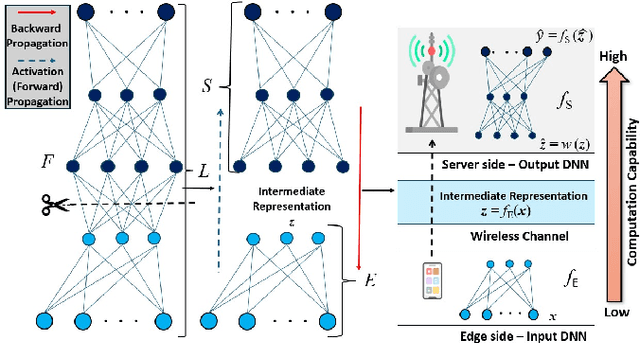
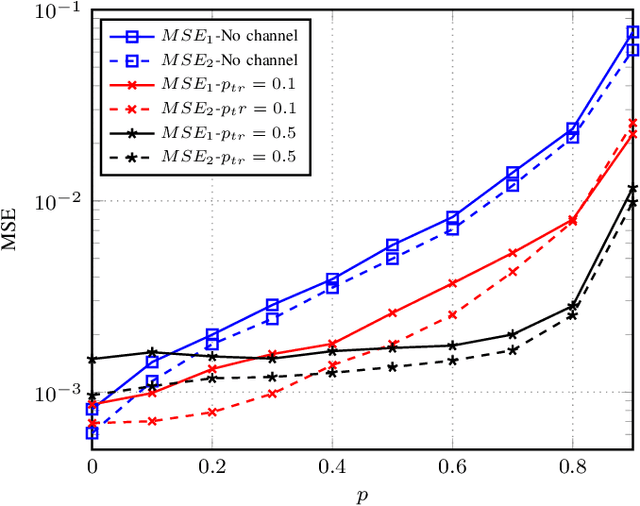
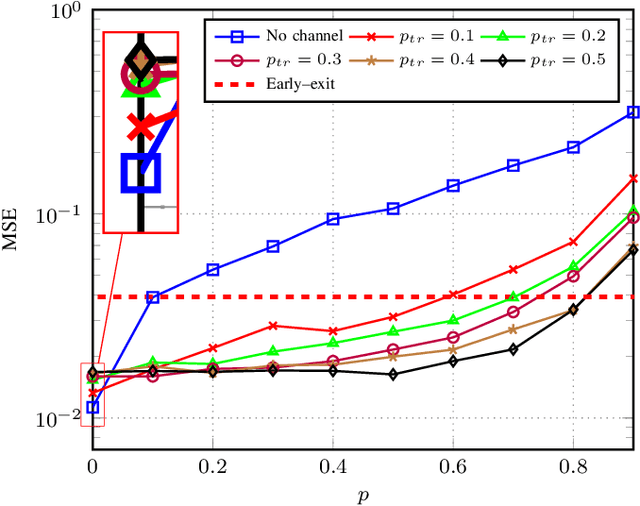
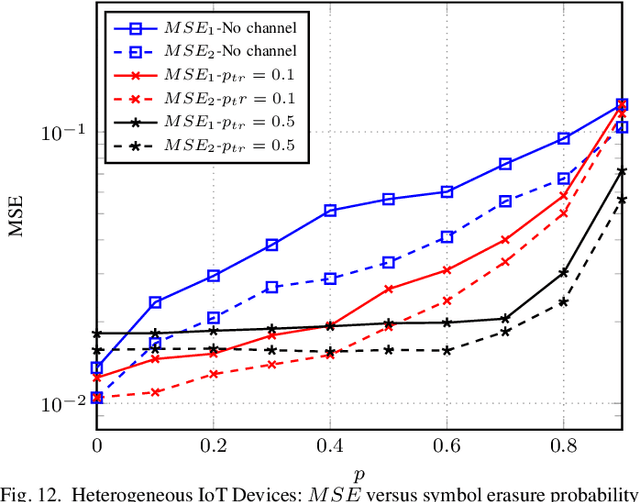
Abstract:The significance of distributed learning and inference algorithms in Internet of Things (IoT) network is growing since they flexibly distribute computation load between IoT devices and the infrastructure, enhance data privacy, and minimize latency. However, a notable challenge stems from the influence of communication channel conditions on their performance. In this work, we introduce COMSPLIT: a novel communication-aware design for split learning (SL) and inference paradigm tailored to processing time series data in IoT networks. COMSPLIT provides a versatile framework for deploying adaptable SL in IoT networks affected by diverse channel conditions. In conjunction with the integration of an early-exit strategy, and addressing IoT scenarios containing devices with heterogeneous computational capabilities, COMSPLIT represents a comprehensive design solution for communication-aware SL in IoT networks. Numerical results show superior performance of COMSPLIT compared to vanilla SL approaches (that assume ideal communication channel), demonstrating its ability to offer both design simplicity and adaptability to different channel conditions.
UAV-assisted Distributed Learning for Environmental Monitoring in Rural Environments
Jul 02, 2024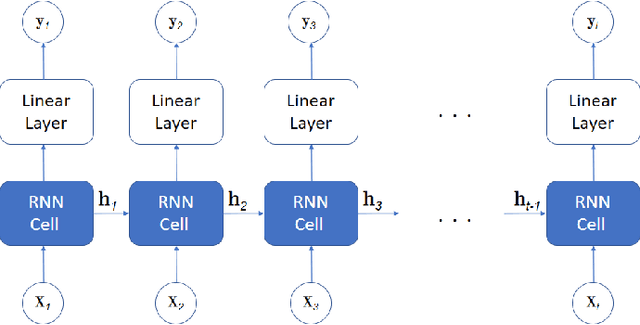
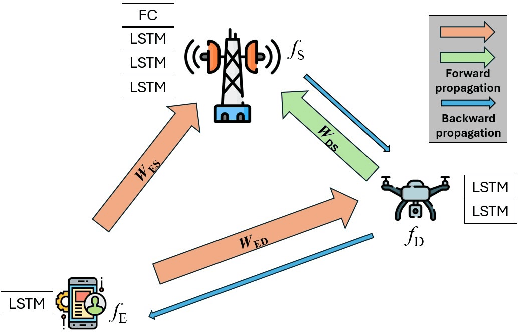
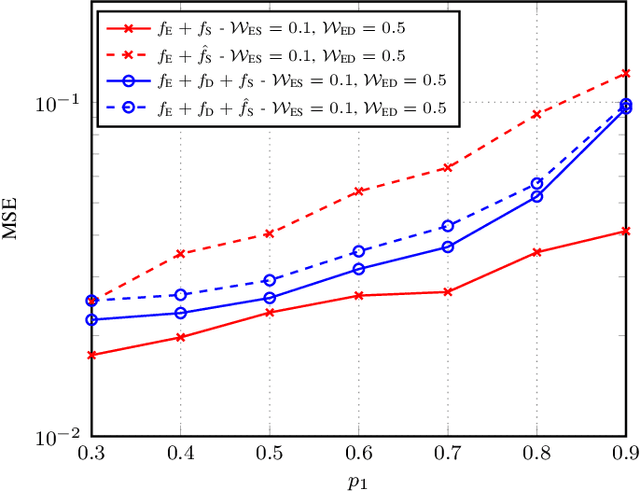

Abstract:Distributed learning and inference algorithms have become indispensable for IoT systems, offering benefits such as workload alleviation, data privacy preservation, and reduced latency. This paper introduces an innovative approach that utilizes unmanned aerial vehicles (UAVs) as a coverage extension relay for IoT environmental monitoring in rural areas. Our method integrates a split learning (SL) strategy between edge devices, a UAV and a server to enhance adaptability and performance of inference mechanisms. By employing UAVs as a relay and by incorporating SL, we address connectivity and resource constraints for applications of learning in IoT in remote settings. Our system model accounts for diverse channel conditions to determine the most suitable transmission strategy for optimal system behaviour. Through simulation analysis, the proposed approach demonstrates its robustness and adaptability, even excelling under adverse channel conditions. Integrating UAV relaying and the SL paradigm offers significant flexibility to the server, enabling adaptive strategies that consider various trade-offs beyond simply minimizing overall inference quality.
Graph Neural Networks on Factor Graphs for Robust, Fast, and Scalable Linear State Estimation with PMUs
Apr 28, 2023Abstract:As phasor measurement units (PMUs) become more widely used in transmission power systems, a fast state estimation (SE) algorithm that can take advantage of their high sample rates is needed. To accomplish this, we present a method that uses graph neural networks (GNNs) to learn complex bus voltage estimates from PMU voltage and current measurements. We propose an original implementation of GNNs over the power system's factor graph to simplify the integration of various types and quantities of measurements on power system buses and branches. Furthermore, we augment the factor graph to improve the robustness of GNN predictions. This model is highly efficient and scalable, as its computational complexity is linear with respect to the number of nodes in the power system. Training and test examples were generated by randomly sampling sets of power system measurements and annotated with the exact solutions of linear SE with PMUs. The numerical results demonstrate that the GNN model provides an accurate approximation of the SE solutions. Furthermore, errors caused by PMU malfunctions or communication failures that would normally make the SE problem unobservable have a local effect and do not deteriorate the results in the rest of the power system.
Scalability and Sample Efficiency Analysis of Graph Neural Networks for Power System State Estimation
Mar 02, 2023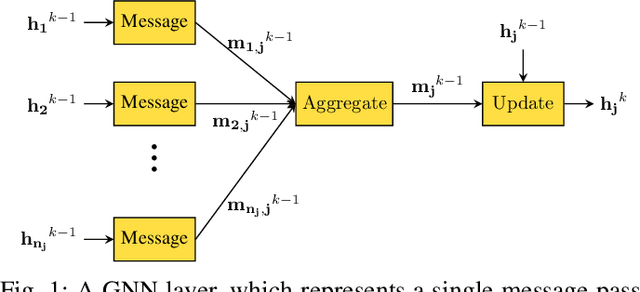
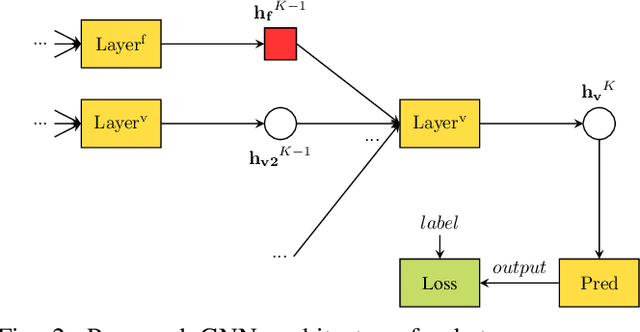
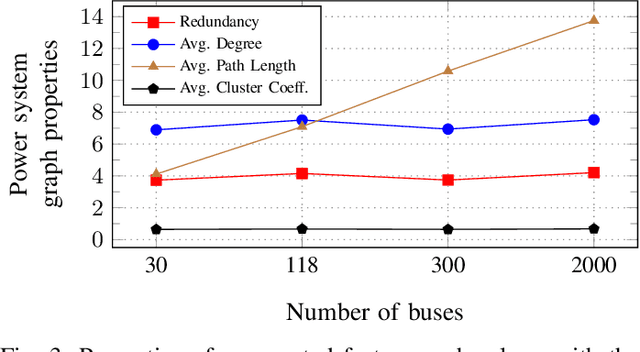
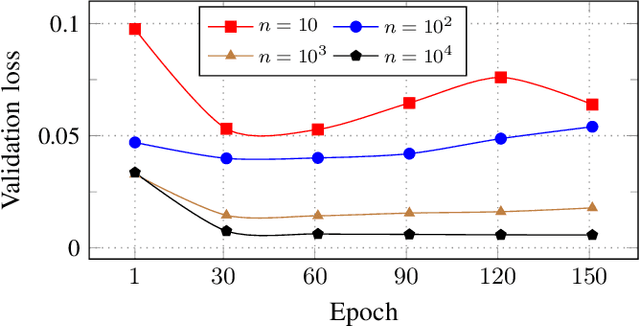
Abstract:Data-driven state estimation (SE) is becoming increasingly important in modern power systems, as it allows for more efficient analysis of system behaviour using real-time measurement data. This paper thoroughly evaluates a phasor measurement unit-only state estimator based on graph neural networks (GNNs) applied over factor graphs. To assess the sample efficiency of the GNN model, we perform multiple training experiments on various training set sizes. Additionally, to evaluate the scalability of the GNN model, we conduct experiments on power systems of various sizes. Our results show that the GNN-based state estimator exhibits high accuracy and efficient use of data. Additionally, it demonstrated scalability in terms of both memory usage and inference time, making it a promising solution for data-driven SE in modern power systems.
Supporting Future Electrical Utilities: Using Deep Learning Methods in EMS and DMS Algorithms
Mar 01, 2023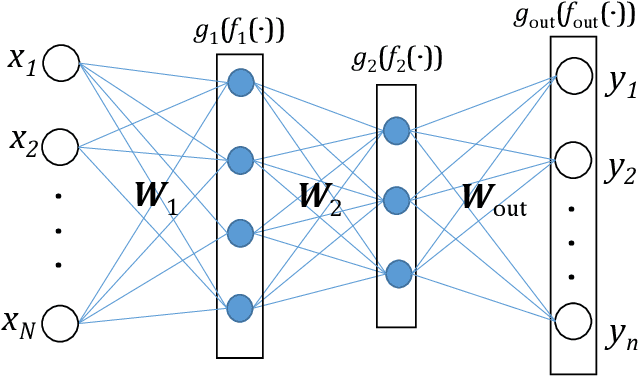
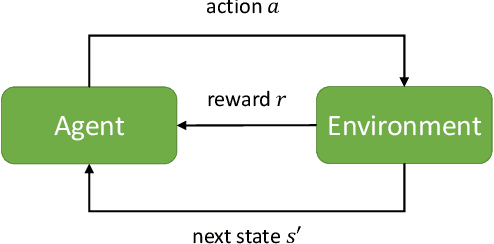

Abstract:Electrical power systems are increasing in size, complexity, as well as dynamics due to the growing integration of renewable energy resources, which have sporadic power generation. This necessitates the development of near real-time power system algorithms, demanding lower computational complexity regarding the power system size. Considering the growing trend in the collection of historical measurement data and recent advances in the rapidly developing deep learning field, the main goal of this paper is to provide a review of recent deep learning-based power system monitoring and optimization algorithms. Electrical utilities can benefit from this review by re-implementing or enhancing the algorithms traditionally used in energy management systems (EMS) and distribution management systems (DMS).
Distributed Nonlinear State Estimation in Electric Power Systems using Graph Neural Networks
Jul 23, 2022
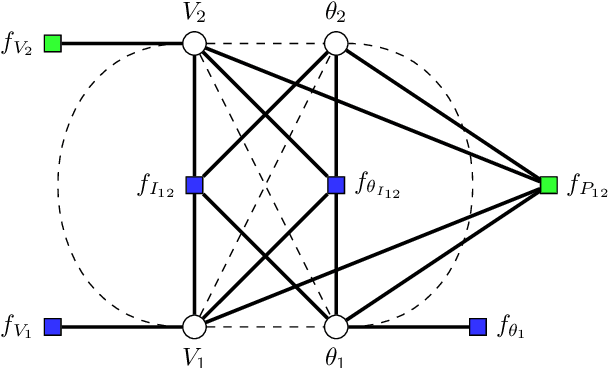
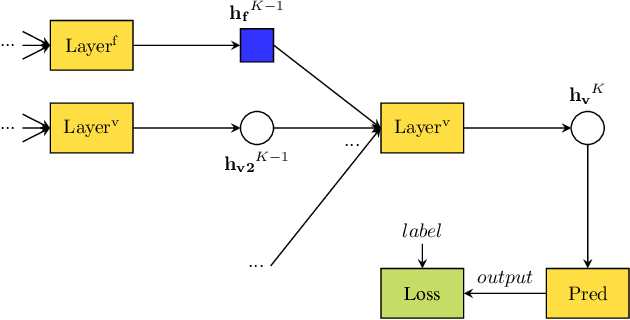
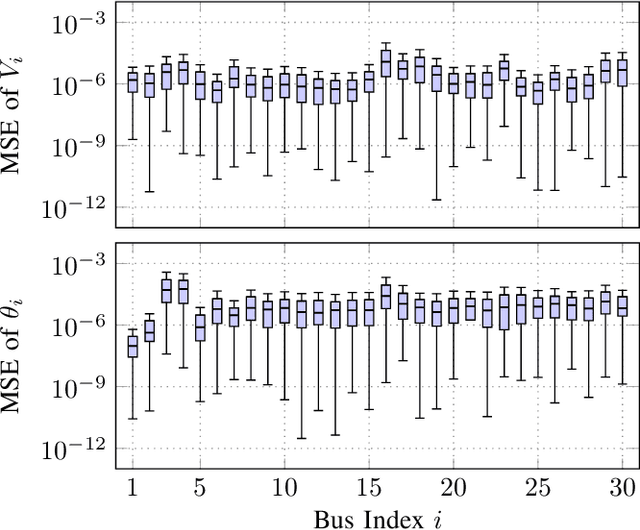
Abstract:Nonlinear state estimation (SE), with the goal of estimating complex bus voltages based on all types of measurements available in the power system, is usually solved using the iterative Gauss-Newton method. The nonlinear SE presents some difficulties when considering inputs from both phasor measurement units and supervisory control and data acquisition system. These include numerical instabilities, convergence time depending on the starting point of the iterative method, and the quadratic computational complexity of a single iteration regarding the number of state variables. This paper introduces an original graph neural network based SE implementation over the augmented factor graph of the nonlinear power system SE, capable of incorporating measurements on both branches and buses, as well as both phasor and legacy measurements. The proposed regression model has linear computational complexity during the inference time once trained, with a possibility of distributed implementation. Since the method is noniterative and non-matrix-based, it is resilient to the problems that the Gauss-Newton solver is prone to. Aside from prediction accuracy on the test set, the proposed model demonstrates robustness when simulating cyber attacks and unobservable scenarios due to communication irregularities. In those cases, prediction errors are sustained locally, with no effect on the rest of the power system's results.
Near Real-Time Distributed State Estimation via AI/ML-Empowered 5G Networks
Jul 22, 2022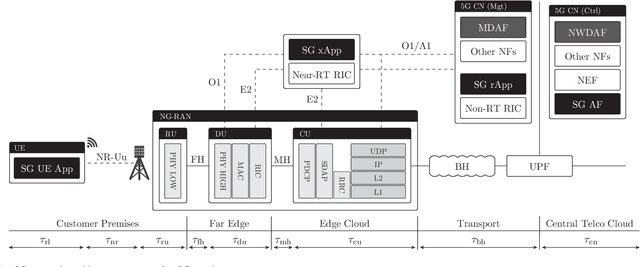
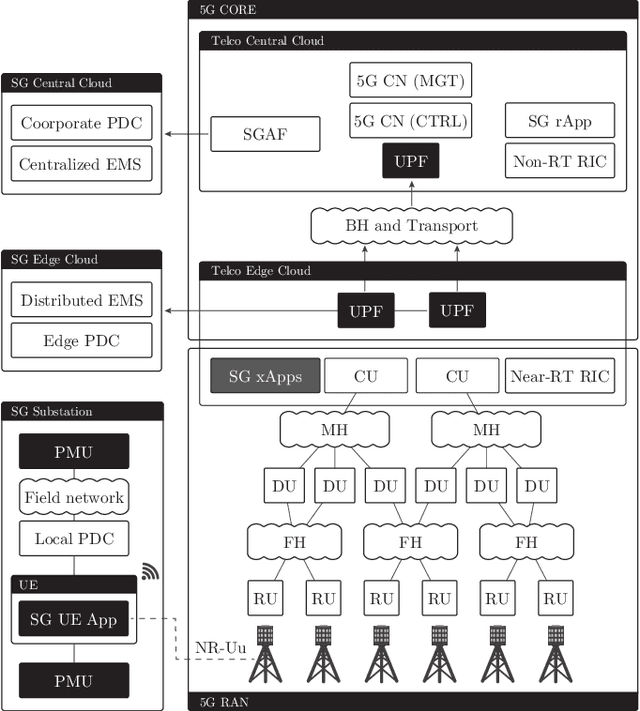
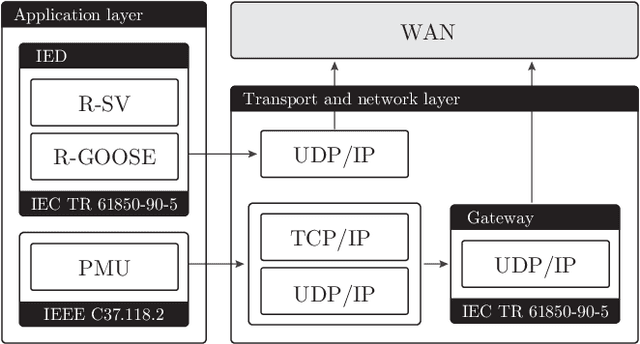
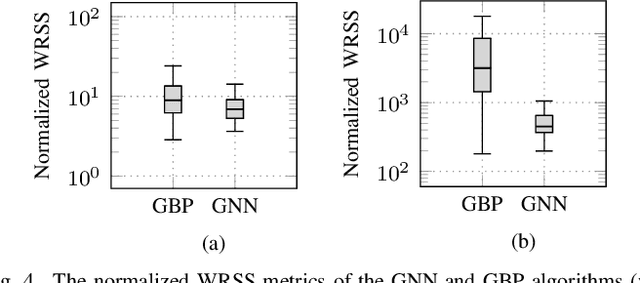
Abstract:Fifth-Generation (5G) networks have a potential to accelerate power system transition to a flexible, softwarized, data-driven, and intelligent grid. With their evolving support for Machine Learning (ML)/Artificial Intelligence (AI) functions, 5G networks are expected to enable novel data-centric Smart Grid (SG) services. In this paper, we explore how data-driven SG services could be integrated with ML/AI-enabled 5G networks in a symbiotic relationship. We focus on the State Estimation (SE) function as a key element of the energy management system and focus on two main questions. Firstly, in a tutorial fashion, we present an overview on how distributed SE can be integrated with the elements of the 5G core network and radio access network architecture. Secondly, we present and compare two powerful distributed SE methods based on: i) graphical models and belief propagation, and ii) graph neural networks. We discuss their performance and capability to support a near real-time distributed SE via 5G network, taking into account communication delays.
 Add to Chrome
Add to Chrome Add to Firefox
Add to Firefox Add to Edge
Add to Edge